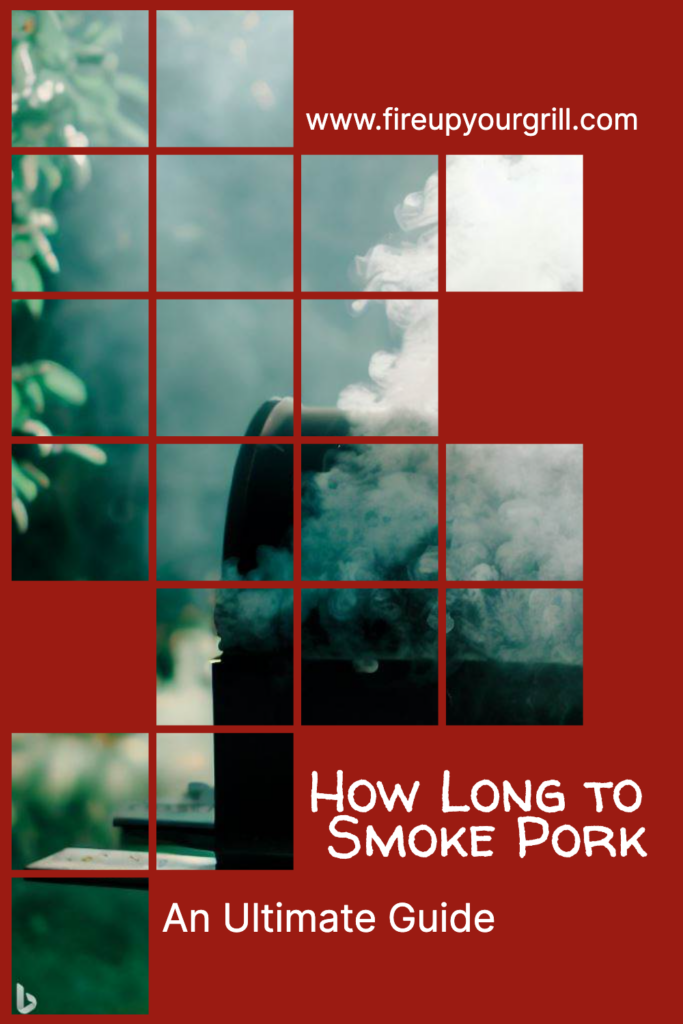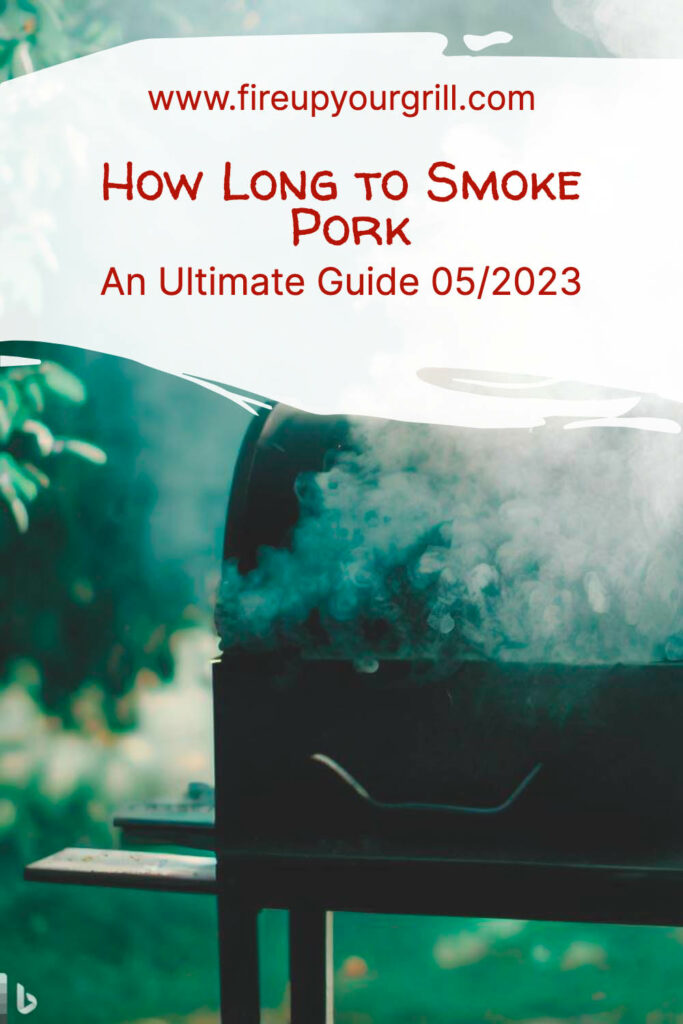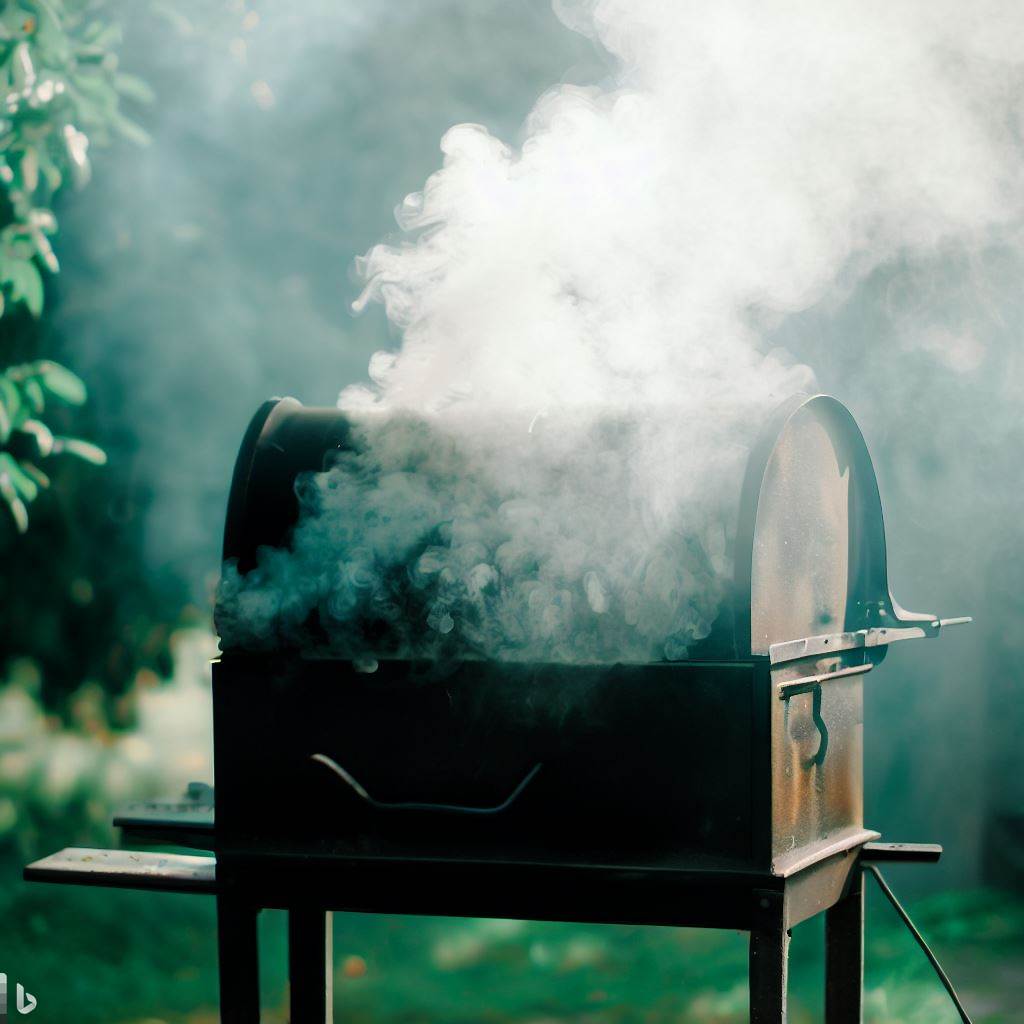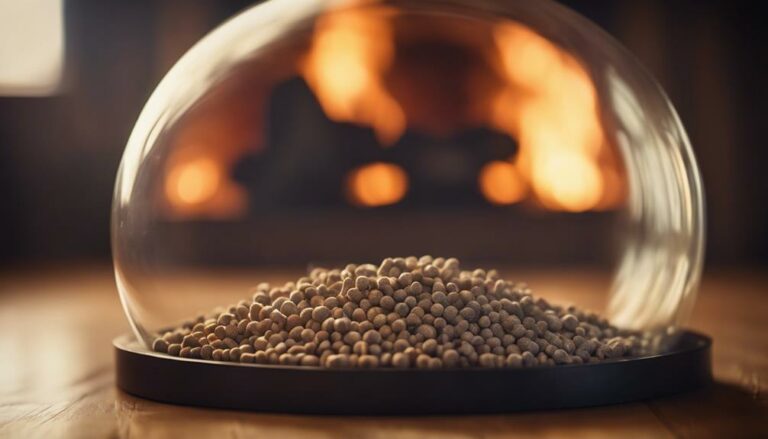Table of Contents
If you are a fan of tender, juicy, and flavorful pork, you might want to try smoking it at home. Smoking is a cooking method that uses low and slow heat and smoke to infuse the meat with amazing taste and texture. Smoking pork can also create a crispy and delicious crust on the outside of the meat, known as the bark.
The Ultimate Guide on How Long to Smoke Pork
But how long does it take to smoke pork? And what are the best tips and tricks for smoking pork? In this ultimate guide, we will answer these questions and more. We will cover:
- What is smoking and why smoke pork?
- What are the benefits of smoking pork?
- What are the different types of pork that can be smoked?
- How to prepare pork for smoking
- How to smoke pork
- How to finish and serve smoked pork
- Some common questions about smoking pork
By the end of this guide, you will have all the information you need to smoke pork like a pro. Let’s get started!
What is smoking and why smoke pork?
Smoking is a cooking method that uses low and slow heat and smoke to cook food. Smoking can be done with different types of smokers, such as electric, gas, charcoal, pellet, or offset smokers. Each type of smoker has its own advantages and disadvantages, depending on your budget, preference, and skill level.
Smoking can be used for different types of food, such as beef, chicken, turkey, fish, cheese, vegetables, and more. But one of the most popular foods to smoke is pork. Pork has a mild and neutral flavor that can benefit from some extra seasoning and smokiness. Smoking also breaks down the connective tissues and collagen in pork, making it more tender and moist.
What are the benefits of smoking pork?
There are many reasons why you should smoke pork. Here are some of them:
- Smoking enhances the flavor of pork. Smoking adds a complex and rich flavor profile to the meat that complements its natural sweetness and fattiness. You can also use different types of wood pellets or chips to add different flavors, such as hickory, mesquite, apple, cherry, oak, pecan, maple, alder, and more.
- Smoking improves the texture of pork. Smoking creates a crispy bark or crust on the outside of the meat, which contrasts nicely with the soft interior. Smoking also renders out some of the fat from the meat, making it more lean and healthy.
- Smoking preserves the meat. Smoking is an ancient method of preserving food that dates back thousands of years. Smoking reduces the moisture content and inhibits bacterial growth in the meat, making it last longer and safer to eat.
- Smoking is fun and satisfying. Smoking is not just a cooking technique, but also a hobby and a passion for many people. Smoking allows you to experiment with different types of meat, seasonings, wood types, and recipes. Smoking also gives you a sense of accomplishment and pride when you serve your delicious smoked pork to your family and friends.
What are the different types of pork that can be smoked?
Pork is a versatile meat that offers many different types of cuts that can be smoked. Some of the most popular types of pork for smoking are:
- Pork shoulder: This is one of the most common types of pork for smoking because it has a lot of fat and connective tissue that renders down during smoking, making it very tender and juicy. Pork shoulder is also relatively inexpensive and easy to find. It is ideal for making pulled pork sandwiches or tacos.
- Pork ribs: These are smaller and leaner cuts that take less time to smoke but require more attention to prevent them from drying out. Pork ribs can be either baby back ribs or spare ribs. Baby back ribs are more tender and meaty, while spare ribs are more flavorful and fatty. Pork ribs are great for serving with barbecue sauce or dry rubs.
- Pork loin: This is a lean and tender cut that cooks quickly and is best sliced and served with a sauce or gravy. Pork loin can be either boneless or bone-in. Boneless pork loin is easier to slice and serve, while bone-in pork loin has more flavor and moisture. Pork loin is perfect for making roast pork or stuffed pork.
- Pork tenderloin: This is a very lean and tender cut that cooks even faster than pork loin and is best sliced thinly and served with a sauce or marinade. Pork tenderloin can be either whole or cut into medallions. Whole pork tenderloin is easier to smoke and serve, while medallions are easier to portion and eat. Pork tenderloin is ideal for making grilled pork or stir-fried pork.
- Pork belly: This is a fatty and flavorful cut that can be smoked whole or cut into bacon or burnt ends. Whole pork belly can be sliced thickly and served with sauce or glaze, while bacon can be sliced thinly and served with eggs or sandwiches. Burnt ends are small cubes of smoked pork belly that are coated with barbecue sauce and smoked again until caramelized. Pork belly is delicious for making crispy pork or candied pork.
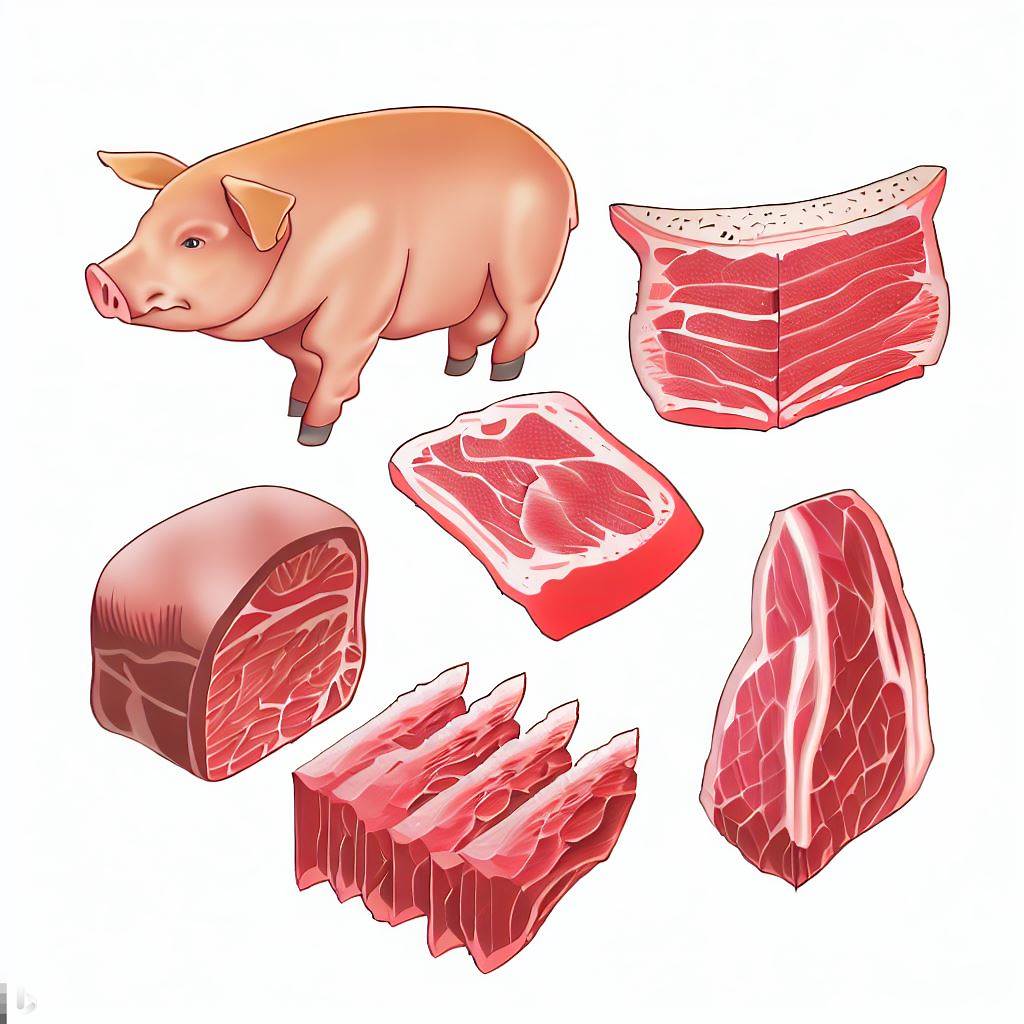
How to Prepare Pork for Smoking
Before you smoke your pork, you need to do some preparation to make sure it is ready for the smoker. Here are some steps to follow:
Choose the right cut of pork
Depending on what type of dish you want to make, you need to choose the right cut of pork for smoking. For example, if you want to make pulled pork, you should choose a pork shoulder, which has a lot of fat and connective tissue that will make it tender and juicy after smoking. If you want to make roast pork, you should choose a pork loin, which is lean and tender and will cook quickly. You should also look for a cut of pork that has a good amount of marbling, which means that it has fat running through the meat, which will add flavor and moisture to the meat.
Trim and season the pork
Once you have chosen your cut of pork, you need to trim off any excess fat or skin from the meat. You don’t want to remove all the fat, as some fat will help keep the meat moist and flavorful during smoking, but you don’t want too much fat either, as it will make the meat greasy and unhealthy. You should also season the meat with your favorite rub or spices. You can use a ready-made rub or make your own by mixing salt, pepper, paprika, garlic powder, onion powder, brown sugar, cumin, chili powder, mustard powder, oregano, thyme, rosemary, sage, or any other herbs and spices that you like. You should apply the rub generously all over the meat, making sure to cover every inch of it. You can also inject some of the rub into the meat using a syringe or a meat injector for more flavor penetration.
Inject or brine the pork
Another way to add flavor and moisture to your pork is to inject it or brine it before smoking. Injecting involves injecting a liquid solution into the meat using a syringe or a meat injector. The liquid solution can be made of water, broth, juice, vinegar, beer, wine, hot sauce, Worcestershire sauce, soy sauce, honey, maple syrup, butter, or any other ingredients that you like. The liquid solution should have some salt and sugar in it, which will help to brine the meat and add flavor and moisture. You should inject the meat in several places, making sure to cover all the muscles and avoid any bones or fat. Brining involves soaking the meat in a saltwater solution for several hours or overnight. The saltwater solution can be made of water, salt, sugar, and any other seasonings that you like. You should use enough water to cover the meat completely in a large container or a ziplock bag. You should also weigh down the meat with a plate or a heavy object to keep it submerged in the brine. Injecting or brining your pork will help to prevent it from drying out during smoking and will also add more flavor and tenderness to the meat.
How to Smoke Pork
Now that your pork is ready for smoking, you need to set up your smoker and choose the right wood pellets for the best results. Also, have Your barbecue apparel ready by hand.
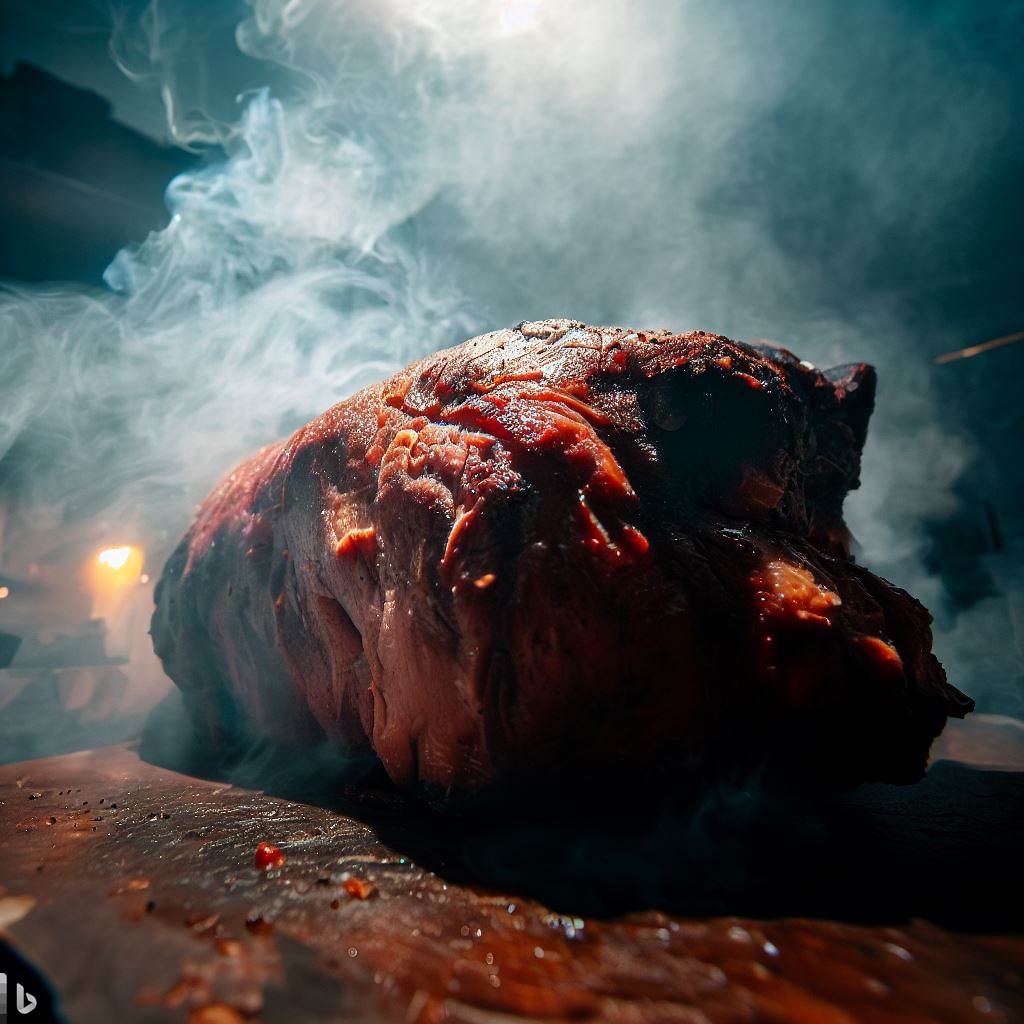
Here are some steps to follow:
Set up your smoker and wood pellets
There are different types of smokers available, such as electric, gas, charcoal, pellet, and offset smokers. Each one has its own advantages and disadvantages, depending on your budget, preference, and skill level. For example, electric and gas smokers are easy to use and control, but they may not produce as much smoke flavor as charcoal or wood smokers. Pellet smokers are convenient and versatile, as they use wood pellets that automatically feed into the firebox and regulate the temperature and smoke.
Offset smokers are traditional and authentic, but they require more attention and maintenance to keep the fire going and avoid temperature fluctuations. Whatever smoker you choose, make sure it is clean and well-maintained before using it. You also need to choose the right wood pellets for your pork. Wood pellets are compressed sawdust that burn cleanly and efficiently in pellet smokers. They come in different flavors, such as hickory, mesquite, apple, cherry, oak, pecan, maple, alder, and more.
Each flavor has its own characteristics and intensity that can affect the taste of your pork. For example, hickory and mesquite are strong and bold flavors that work well with beef and pork. Apple and cherry are mild and sweet flavors that work well with chicken and turkey. Oak is a well-balanced flavor that works well with seafood and veggies. Pecan is a nutty flavor that works well with baking and poultry. You can also mix different flavors of wood pellets to create your own custom blend.
Set the smoker temperature and time according to the type of pork you are smoking. As a general rule, you want to smoke your pork at a low and slow temperature of 225°F to 250°F for several hours until it reaches the desired internal temperature. The smoking time will vary depending on the size, shape, thickness, bone structure, fat content, and starting temperature of your pork.
For example, a pork shoulder can take anywhere from 8 to 12 hours to smoke until it reaches an internal temperature of 195°F to 203°F for pulled pork. A pork rib can take anywhere from 3 to 6 hours to smoke until it reaches an internal temperature of 190°F to 200°F for fall-off-the-bone tenderness. A pork loin or tenderloin can take anywhere from 2 to 3 hours to smoke until it reaches an internal temperature of 145°F for juicy slices.
A pork belly can take anywhere from 7 to 10 hours to smoke until it reaches an internal temperature of 190°F for crispy bacon or burnt ends. You can use a digital meat thermometer or a wireless probe thermometer to monitor the internal temperature of your pork throughout the smoking process.
Monitor the internal temperature of the pork. One of the most important aspects of smoking pork is monitoring the internal temperature of the meat. This will help you determine when your pork is done and avoid overcooking or undercooking it. You can use a digital meat thermometer or a wireless probe thermometer to check the internal temperature of your pork at different stages of the smoking process. You should insert the thermometer into the thickest part of the meat without touching any bone or fat. You should also check different spots on the meat to get an accurate reading.
The ideal internal temperature for your pork will depend on the type of pork you are smoking and how you want to serve it. For example, if you want to make pulled pork, you should aim for an internal temperature of 195°F to 203°F, which will make the meat fall apart easily. If you want to make sliced pork, you should aim for an internal temperature of 145°F to 160°F, which will make the meat more firm and juicy.
Wrap or spritz the pork during smoking. Depending on your preference and the type of pork you are smoking, you may want to wrap or spritz the pork during smoking. Wrapping involves wrapping the meat in foil or butcher paper after it reaches a certain internal temperature, usually around 165°F. This will help to speed up the cooking process, retain more moisture, and create a softer bark.
Spritzing involves spraying the meat with a liquid solution every 30 to 60 minutes during smoking. This will help to keep the meat moist, add more flavor, and create a crispier bark. The liquid solution can be made of water, vinegar, juice, broth, sauce, or any other ingredients that you like. You can use a spray bottle or a mop to apply the liquid to the meat. Wrapping or spritzing your pork is optional, but it can make a difference in the final result.
Table 1: best wood and type of pork for smoking.
| Wood flavor | Description | Best for smoking |
|---|---|---|
| Apple | Sweet, mild, and fruity. | All types of pork |
| Cherry | Sweet, mild, and fruity. | All types of pork |
| Pecan | Sweet, mild, and nutty. | All types of pork |
| Maple | Sweet, mild, and smoky. | All types of pork |
| Hickory | Strong, intense, bacony, and earthy. | Beef and pork |
| Oak | Strong, intense, smoky, and earthy. | Beef and pork |
| Mesquite | Very strong, intense, and sharp. | Beef and dark meat poultry |
How Long to Smoke a Pork Butt at 225°
One of the most popular types of pork for smoking is the pork butt, also known as the Boston butt or the pork shoulder. This cut of meat has a lot of fat and connective tissue that melts during smoking, making it very tender and juicy. It is ideal for making pulled pork sandwiches or tacos.
But how long does it take to smoke a pork butt at 225°F? The answer depends on several factors, such as the size, shape, bone structure, fat content, and starting temperature of your pork butt. As a general rule, you can expect to smoke your pork butt for about 90 minutes per pound at 225°F. This means that a 10-pound pork butt will take about 15 hours to smoke until it reaches an internal temperature of 195°F to 203°F for pulled pork.
However, this is only an estimate and not a guarantee. Smoking is not an exact science and there are many variables that can affect the smoking time. For example, the weather, the type of smoker, the quality of wood pellets, and the thickness of the meat can all influence how long it takes to smoke your pork butt. Therefore, it is important to use a meat thermometer and check the internal temperature of your pork butt regularly throughout the smoking process.
You should also be aware of the stall phenomenon, which is when the temperature of your pork butt stops rising or even drops slightly during smoking. This is normal and happens because of evaporation and cooling on the surface of the meat. The stall can last for several hours and can make you think that your pork butt is not cooking properly. However, you should not panic or increase the smoker’s temperature. Just be patient and wait for the stall to pass. The stall will eventually end and your pork butt will resume cooking until it reaches the desired internal temperature.
Smoking a pork butt at 225°F can take a long time, but it is worth it. You will be rewarded with tender, juicy, and flavorful meat that will make your mouth water. Just remember to prepare your pork butt properly, set up your smoker correctly, monitor your pork butt closely, and rest your pork butt adequately before serving. By following these steps, you will be able to smoke a pork butt like a pro and impress your family and friends with your delicious smoked pork.
How Long to Smoke a Pork Butt at 250°
If you want to smoke your pork butt faster, you can increase the smoker temperature to 250°F.
This will reduce the smoking time by about 15% compared to smoking at 225°F. However, you should still monitor the internal temperature of your pork butt and not rely on the clock alone.
At 250°F, you can expect to smoke your pork butt for about 75 minutes per pound until it reaches an internal temperature of 195°F to 203°F for pulled pork. This means that a 10-pound pork butt will take about 12.5 hours to smoke until it is done.
Smoking your pork butt at 250°F can save you some time, but it may also affect the texture and flavor of your meat. Smoking at a higher temperature may cause more moisture loss and less smoke penetration. It may also create a harder bark or crust on the outside of the meat. Therefore, you should weigh the pros and cons of smoking your pork butt at 250°F and decide if it is worth it for you.
How Long to Smoke a Pork Shoulder at 225°
Another common type of pork for smoking is the pork shoulder, also known as the picnic shoulder or the picnic roast. This cut of meat comes from the lower part of the shoulder blade, upper arm, and neck of the pig. It has less marbling and more connective tissue than the pork butt, but it also has a thick layer of fat and skin that can create a crispy and flavorful crust.
But how long does it take to smoke a pork shoulder at 225°F? The answer also depends on several factors, such as the size, shape, bone structure, fat content, and starting temperature of your pork shoulder. As a general rule, you can expect to smoke your pork shoulder for about 90 minutes per pound until it reaches an internal temperature of 180°F to 185°F for sliced pork or 195°F to 205°F for pulled pork. This means that an 8-pound pork shoulder will take about 12 hours to smoke until it is done.
How Long to Smoke a Pork Shoulder at 250°
If you want to smoke your pork shoulder faster, you can increase the smoker temperature to 250°F. This will reduce the smoking time by about 15% compared to smoking at 225°F. However, you should still monitor the internal temperature of your pork shoulder and not rely on the clock alone.
At 250°F, you can expect to smoke your pork shoulder for about 75 minutes per pound until it reaches an internal temperature of 180°F to 185°F for sliced pork or 195°F to 205°F for pulled pork. This means that a 10-pound pork shoulder will take about 12.5 hours to smoke until it is done.
Smoking your pork shoulder at 250°F can save you some time, but it may also affect the texture and flavor of your meat. Smoking at a higher temperature may cause more moisture loss and less smoke penetration. It may also create a harder bark or crust on the outside of the meat. Therefore, you should weigh the pros and cons of smoking your pork shoulder at 250°F and decide if it is worth it for you.
How long to smoke baby back ribs at 250°
Smoking baby back ribs at 250 degrees Fahrenheit is a low and slow method that results in tender and juicy meat. The cooking time depends on the size and thickness of the ribs, but generally, it takes about 4 to 5 hours to smoke a full rack of baby back ribs at this temperature. You can check the doneness of the ribs by using a meat thermometer or by looking for signs such as the meat pulling back from the bones, the bones becoming exposed, or the meat easily tearing with a fork.
To smoke baby back ribs at 250 degrees, you will need to follow these steps:
- Preheat your smoker to 250 degrees F and add some wood chunks or chips for smoke flavor. You can use any type of wood you like, such as hickory, apple, cherry, or mesquite.
- Prepare your ribs by removing the membrane from the back of the ribs and trimming any excess fat. Season your ribs with your favorite rub or a simple mixture of salt, pepper, garlic powder, onion powder, chili powder, and cumin.
- Place your ribs on the smoker, bone-side down, and let them smoke for 2 hours without opening the lid. This will allow the smoke to penetrate the meat and create a nice bark on the surface.
- After 2 hours, wrap your ribs lightly in aluminum foil to retain moisture and prevent them from drying out…
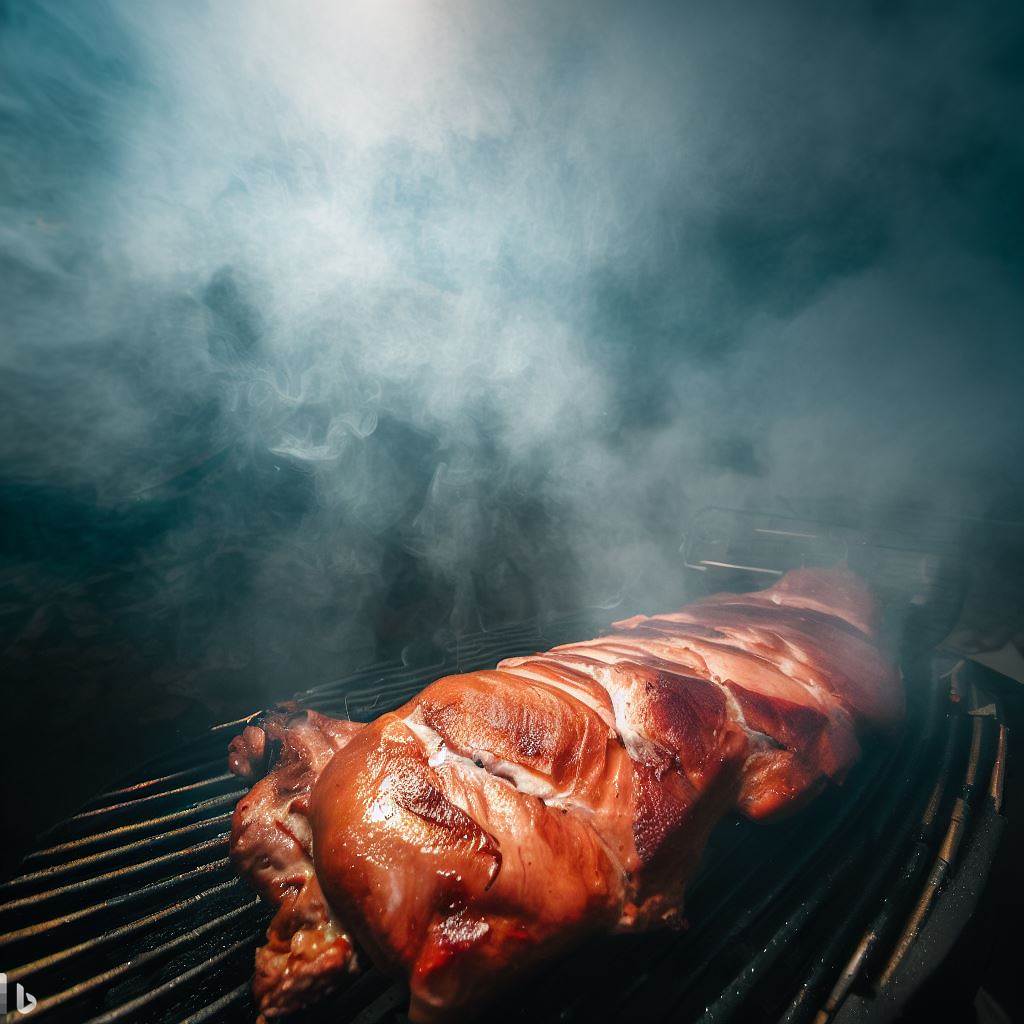
Table 2: What temperature to smoke pork for optimal results.
| Cut of pork | Smoking time (per pound) | Smoking temperature (°F) | Finished internal temperature (°F) |
|---|---|---|---|
| Whole hog | 7 minutes | 225 – 250 | 200 |
| Butt | 1 hour | 225 – 250 | 205 |
| Shoulder | 1 hour | 225 – 250 | 205 |
| Belly | 3 hours | 225 – 250 | 165 |
| Baby back ribs | 4 – 5 hours | 225 – 250 | 190 – 200 |
| Spare ribs | 5 – 6 hours | 225 – 250 | 190 – 200 |
| Loin | 3 – 4 hours | 225 – 250 | 145 |
| Tenderloin | 2 – 3 hours | 225 – 250 | 145 |
| Ham | 20 minutes | 225 – 250 | 140 |
How to Finish and Serve Smoked Pork
After you smoke your pork, you need to finish and serve it properly to enjoy the best results.
Here are some steps to follow:
Rest and pull or slice the pork
Once your pork reaches the desired internal temperature, you need to let it rest for at least 30 minutes to an hour before pulling or slicing it. This will allow the meat fibers to relax and the juices to redistribute throughout the meat. To keep your pork warm and moist during resting, you can wrap it in foil or butcher paper and place it in a cooler with some towels or blankets. This will create an insulated environment that will maintain the temperature and moisture of the pork. After resting, you can pull or slice your pork according to your preference. To pull your pork, you can use two forks or meat claws to shred the meat into bite-sized pieces. You can also remove any excess fat or bones from the meat. To slice your pork, you can use a sharp knife or an electric knife to cut the meat into thin or thick slices. You can also cut across the grain of the meat for more tenderness.
Make sauces and sides for smoked pork
To enhance the flavor and texture of your smoked pork, you can serve it with some sauces and sides of your choice. For sauces, you can use barbecue sauce, vinegar sauce, mustard sauce, or any other sauce that you like. You can either mix the sauce with the pulled pork or serve it on the side for dipping or drizzling. For sides, you can choose from a variety of options, such as coleslaw, baked beans, potato salad, macaroni and cheese, cornbread, green salad, or any other side that you like. You can either serve the sides separately or make a sandwich with the smoked pork and some of the sides.
Store and reheat leftover smoked pork
If you have any leftover smoked pork, you can store it in an airtight container or a ziplock bag and refrigerate it for up to 4 days or freeze it for up to 3 months. To reheat your smoked pork, you can use a microwave, an oven, a stovetop, or a smoker. For the microwave, place the smoked pork in a microwave-safe dish and cover it with a damp paper towel. Microwave on high for 2 to 3 minutes or until heated through. For the oven, place the smoked pork in an oven-safe dish and cover it with foil. Bake at 325°F for 15 to 20 minutes or until heated through. For the stovetop, place the smoked pork in a skillet over medium-low heat and add some water or broth to prevent drying out. Cook for 10 to 15 minutes or until heated through, stirring occasionally. For the smoker, place the smoked pork in a foil pan and cover it with foil. Smoke at 225°F for 30 to 45 minutes or until heated through.
Conclusion
Smoking pork is a great way to enjoy tender, juicy, and flavorful meat that can be used for various dishes and occasions. Smoking pork requires some preparation, patience, and attention, but the results are well worth it. By following this ultimate guide, you will be able to smoke pork like a pro and impress your family and friends with your delicious smoked pork.
FAQs
Here are some common questions and answers about smoking pork:
How do I know when my smoked pork is done?
The best way to know when your smoked pork is done is to use a meat thermometer and check the internal temperature of the meat. The ideal internal temperature will depend on the type of pork you are smoking and how you want to serve it. For example, if you want to make pulled pork, you should aim for an internal temperature of 195°F to 203°F, which will make the meat fall apart easily. If you want to make sliced pork, you should aim for an internal temperature of 145°F to 160°F, which will make the meat more firm and juicy.
How do I keep my smoked pork moist?
There are several ways to keep your smoked pork moist during and after smoking. You can inject or brine your pork before smoking to add more flavor and moisture to the meat. You can wrap or spritz your pork during smoking to speed up the cooking process, retain more moisture, and create a softer or crispier bark. You can also rest your pork after smoking to allow the juices to redistribute throughout the meat.
How do I add more flavor to my smoked pork?
There are many ways to add more flavor to your smoked pork. You can season your pork with your favorite rub or spices before smoking. You can use different types of wood pellets or chips to add different flavors of smoke to the meat. You can also serve your smoked pork with some sauces and sides of your choice.
How do I store and reheat leftover smoked pork?
You can store leftover smoked pork in an airtight container or a ziplock bag and refrigerate it for up to 4 days or freeze it for up to 3 months. To reheat your smoked pork, you can use a microwave, an oven, a stovetop, or a smoker.
What are some dishes that I can make with smoked pork?
Smoked pork is very versatile and can be used for various dishes and occasions. Some of the most popular dishes that you can make with smoked pork are pulled pork sandwiches, tacos, nachos, salads, pizzas, casseroles, soups, stews, chili, and more.
